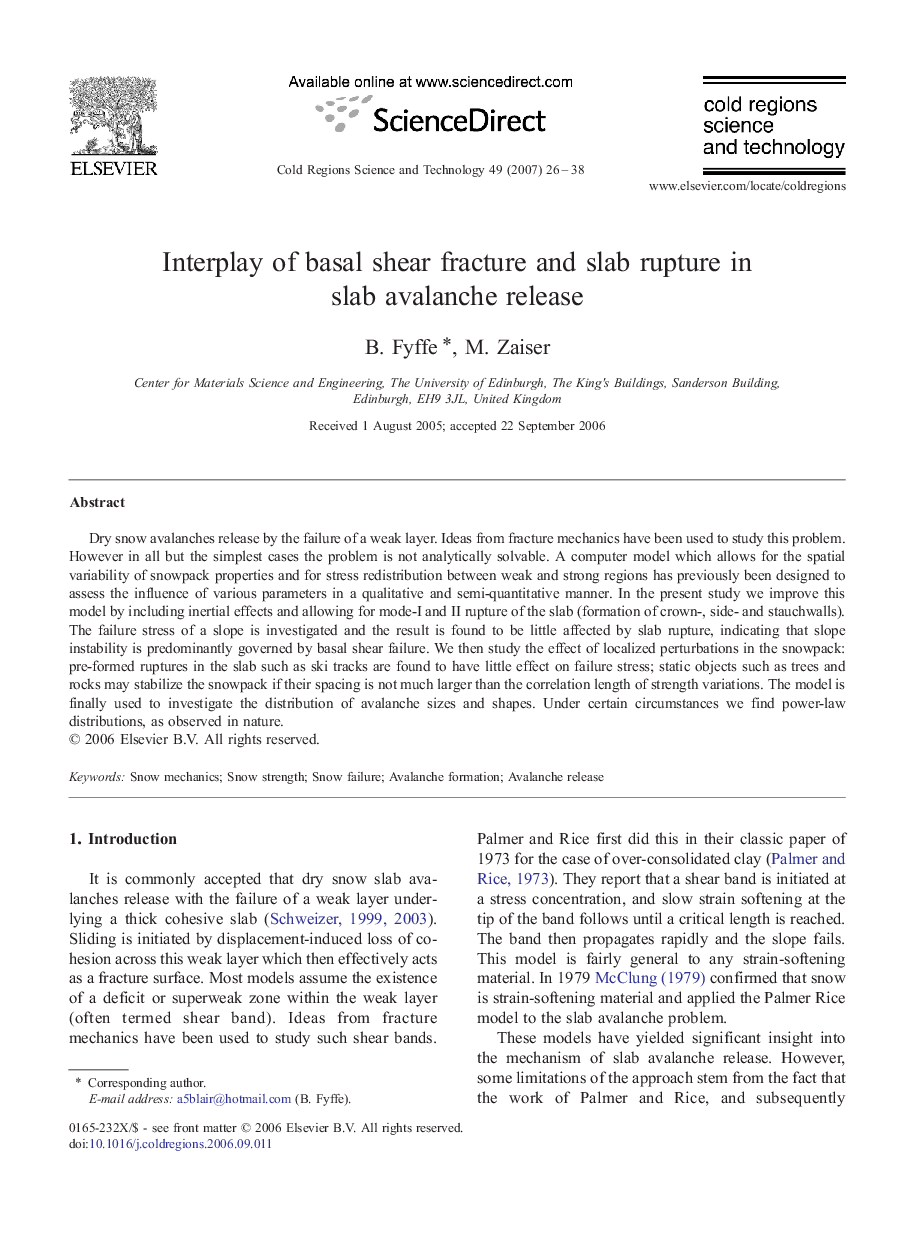| Article ID | Journal | Published Year | Pages | File Type |
|---|---|---|---|---|
| 4676661 | Cold Regions Science and Technology | 2007 | 13 Pages |
Abstract
Dry snow avalanches release by the failure of a weak layer. Ideas from fracture mechanics have been used to study this problem. However in all but the simplest cases the problem is not analytically solvable. A computer model which allows for the spatial variability of snowpack properties and for stress redistribution between weak and strong regions has previously been designed to assess the influence of various parameters in a qualitative and semi-quantitative manner. In the present study we improve this model by including inertial effects and allowing for mode-I and II rupture of the slab (formation of crown-, side- and stauchwalls). The failure stress of a slope is investigated and the result is found to be little affected by slab rupture, indicating that slope instability is predominantly governed by basal shear failure. We then study the effect of localized perturbations in the snowpack: pre-formed ruptures in the slab such as ski tracks are found to have little effect on failure stress; static objects such as trees and rocks may stabilize the snowpack if their spacing is not much larger than the correlation length of strength variations. The model is finally used to investigate the distribution of avalanche sizes and shapes. Under certain circumstances we find power-law distributions, as observed in nature.
Related Topics
Physical Sciences and Engineering
Earth and Planetary Sciences
Earth and Planetary Sciences (General)
Authors
B. Fyffe, M. Zaiser,
